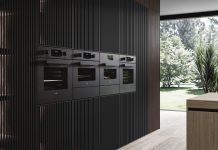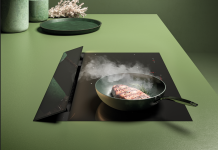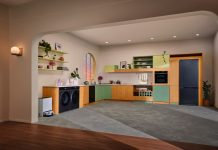The Museum of Recycling (www.museodelriciclo.it) – web project of the Ecolight consortium, which promotes art created with the waste – comes back to expose at Ecomondo (17th international trade fair of material & energy recovery and sustainable development, Rimini 6-9 November) for the fourth consecutive year. The Museum showcases some sculptures made from waste materials. «The theme is waste that come to life, objects destined for landfill that find not only a second use, but they become “alive” in all respects», says Giancarlo Dezio, general manager of Ecolight. Old household appliances, mechanical parts of old equipments and materials derived from waste are transformed into robots, androids and animals capable to be exciting. Three artists were selected for the stand of the museum: Gaetano Muratore, Paolo Lo Giudice and Davide Lazzarini. Muratore exposes the imposing Direttore d’Orchestra (orchestra leader) made with an electric helmet of ’30s, the Radio Philips Robot made with a Philips radio of ’60s and an old ammeter, the Kyocera Robot made with a Kyocera appliance, the Esjot Dancer made with a manometer of welding machine and the Robot Marelli RM5 made with a Radiomarelli tape recorder. Paolo Lo Giudice exposes Re-mote Corner, a delicate representation of a couple sitting on a bench made with frames, tanks and the headlight of a motorcycle, Blue Artic, penguin made from parts of blender and joystick, The Warmth of a Friend where the element of a radiator becomes a cute dachshund, the Lion King with an electric razor and AdalGhisa made with fittings of car chains and an old cast iron plate. The third artist is Davide Lazzarini: he presents two futuristic insects as Queen Bee and Dragon Fly made with electric motors, a table lamp, the mechanism of an old stove and an iron. Moreover, «as in past editions – Dezio concludes – we have reserved a space for the project WEEE in Prison, which is aimed at the social reintegration of persons in prison. Alongside the disassembly of not dangerous WEEE, the laboratory of Forlì, which is run by the social cooperative Gulliver, gives room for creativity. Sculptures and installations of great symbolic value thus can be created».
© 2024 Tecniche Nuove Spa • All rights reserved. Sede legale: Via Eritrea 21 - 20157 Milano. Capitale sociale: 5.000.000 euro interamente versati. Codice fiscale, Partita Iva e Iscrizione al Registro delle Imprese di Milano: 00753480151
Pubblicazione autorizz. dal Trib. di Milano con iscrizione al N. 913 del 28.11.05 - Iscritta al ROC Registro degli Operatori di Comunicazione al n° 6419 (delibera 236/01/Cons del 30.6.01 dell’Autorità per le Garanzie nelle Comunicazioni)
Pubblicazione autorizz. dal Trib. di Milano con iscrizione al N. 913 del 28.11.05 - Iscritta al ROC Registro degli Operatori di Comunicazione al n° 6419 (delibera 236/01/Cons del 30.6.01 dell’Autorità per le Garanzie nelle Comunicazioni)





